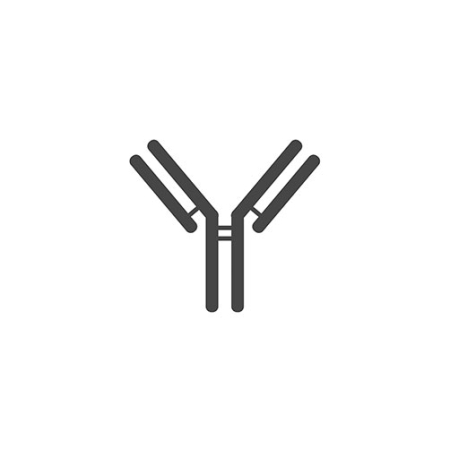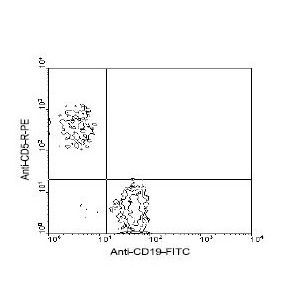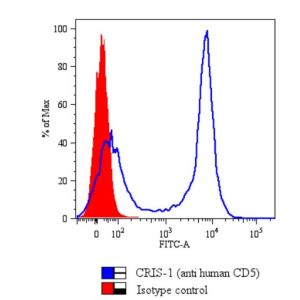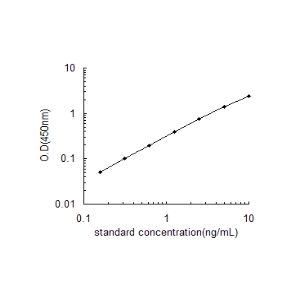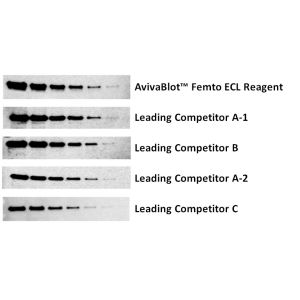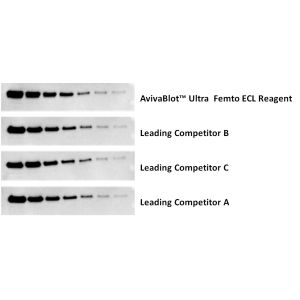Human CD5 Antibody : Biotin
Cat# OASB01010
Size : 100tests
Brand : Aviva Systems Biology
| Datasheets/Manuals | Printable datasheet for Human CD5 Antibody : Biotin (OASB01010) |
|---|
| Tested Species Reactivity | Human |
|---|---|
| Predicted Species Reactivity | Human |
| Clonality | Monoclonal |
| Clone | UCHT2 |
| Isotype | IgG1 |
| Host | Mouse |
| Conjugation | Biotin |
| Application | FC, IHC-F, IP, WB |
| Additional Information | Description: CD5, a member of the scavenger receptor superfamily of cell surface receptors, is a type I transmembrane glycoprotein whose ligand is CD72. It is expressed on most thymocytes, all mature T cells, and a subset of B cells. CD5 plays a role in regulation of T cell activation and signaling. |
| Reconstitution and Storage | Store at 2-8C |
| Immunogen | Thymocytes and Sezary T cells |
| Concentration | Lot specific |
| Specificity | CD5 |
| Characterization | To insure lot to lot consistency, each batch of product is tested by flow cytometry to conform to thecharacteristics of a standard reference reagent. |
| Warning | Reagents contain sodium azide which is very toxic if ingested or inhaled. Avoid contact with skin, eyes, orclothing. Wear eye or face protection when handling. If skin or eye contact occurs, wash with copiousamounts of water. If ingested or inhaled, contact a physician immediately. Sodium azide yields toxichydrazoic acid under acidic conditions. Dilute azide- containing compounds in running water beforediscarding to avoid accumulation of potentially explosive deposits in lead or copper plumbing. |
| Dilution | Flow Cytometry: Purified (UNLB) antibody Fluorescein conjugate Biotin conjugate R-phycoerythrin conjugate Allophycocyanin conjugate Spectral Red conjugate <= 1 ug/106 cells 20 uL/106 cells 10 uL/106 cells 10uL/106 cells 10 uL/106 cells 10 uL/106 cells |
| Application Info | Flow cytometry, Immunohistochemistry (frozen sections), Western blotting, Immunoprecipitation |
| Other Applications Data | Since applications vary, you should determine the optimum workingdilution of the product that is appropriate for your specific need. |
| Storage | - The purified (UNLB) antibody is supplied as 0.1 mg purified immunoglobulin in 1.0 mL of phosphatebuffered saline containing 0.1% PBS/NaN3. Store at 2- 8 C - The fluorescein (FITC) conjugate is supplied as 100 tests in 2.0 mL of PBS/NaN3 and a stabilizingagent. Store at 2- 8 C - The biotin (BIOT) conjugate is supplied as 100 tests in 1.0 mL of phosphate buffered saline containing0.1% PBS/NaN3 and a stabilizing agent. Store at 2- 8 C - The R- phycoerythrin (R- PE) and allophycocyanin (APC) conjugates are supplied as 100 tests in 1.0mL of PBS/NaN3 and a stabilizing agent. Store at 2- 8 C. Do not freeze! - The Spectral Red (SPRD) conjugate is supplied as 100 tests in 1.0 mL of PBS/NaN3 and astabilizing agent. Store at 2- 8 C. Do not freeze! - Protect conjugated forms from light. Reagents are stable for the period shown on the label if stored asdirected. |
| Reference | 1. McMichael, A.K., P.C.L. Beverly, S. Cobbold, M.J. Crumpton, W. Gilks, F.M. Gotch, N. Hogg, M. Horton, N. Ling, I.C.M. MacLennan, D.Y Mason, C. Milstein, D. Spiegelhalter, and H. Waldmann, eds. 1987. Leukocyte Typing III: White Cell Differentiation Antigens, OxfordUniversity Press, Oxford 2. Knapp, W., B. Dorken, W.R. GIlks, E.P. Rieber, R.E. Schmidt, H. Stein, A.E.G.K. Von dem Borne, eds. 1989. Leukocyte Typing IV: WhiteCell Differentiation Antigens, Oxford University Press, Oxford 3. Barclay, A.N., M.H. Brown, S.K.A. Law, A.J. McKnight, M.G. Tomlinson, and P.A. van der Merwe, eds. 1997. The Leukocyte AntigensFacts Book, 2nd Edition, CD5 Section,Academic Press, New York, p. 143 4. Lydyard, P.M., A. Lamour, L.E. MacKenzie, C. Jamin, R.A. Mageed, and P. Youinou. 1993. Immunol. Lett. 38:159 5. Lankester, A.C., G.M. van Schijndel, J.L. Cordell, C.J. van Noesel, and R.A. van Lier. 1994. Eur. J. Immunol. 24:812. |
|---|---|
| Gene Symbol | CD5 |
| Gene Full Name | T-cell surface glycoprotein CD5 |
| Alias Symbols | T1, LEU1 |
| NCBI Gene Id | 921; 695249; 102136514; 737721 |
| Protein Name | T-cell surface glycoprotein CD5 |
| Description of Target | This gene encodes a member of the scavenger receptor cysteine-rich (SRCR) superfamily. Members of this family are secreted or membrane-anchored proteins mainly found in cells associated with the immune system. This protein is a type-I transmembrane glycoprotein found on the surface of thymocytes, T lymphocytes and a subset of B lymphocytes. The encoded protein contains three SRCR domains and may act as a receptor to regulate T-cell proliferation. Alternative splicing results in multiple transcript variants encoding different isoforms. |
| Uniprot ID | P06127 |
| Protein Accession # | NP_001333385.1 |
| Nucleotide Accession # | NM_001346456.1 |




